Piano Cleaning
Many of our clients ask us if there is some way to clean the insides of their grand pianos. The answer is yes, but there is no “easy” way because dust that has accumulated under the strings is hard to get out without the proper tools.
We have the special tools needed to clean your piano soundboard and since we take the action out of the piano to clean the soundboard, we will also vacuum the action parts and the inside of the piano where the action normally sits (keybed). We will also clean off the plate and clean under the music desk — around the tunings pins, under the strings near the tunings pins, and the felt that is under the strings.
In addition to a powerful portable vac and brushes, we bring special tools created by piano technician Bill Spurlock which can reach between and under the strings to push the dust and debris around, and tiny vacuum attachments which can get to the dust and vacuum it up.
Because each piano is different in how easy it is to maneuver around in and what kind of dirt is on the soundboard, we charge by the hour for this service, but it will usually cost between $50 and $100. If you schedule the piano cleaning for the same day your piano is being tuned, the cost will be slightly less since it can be done in the same trip.
If you want to clean around the tuning pins or clean off the dampers yourself, please, please read the warnings below first!
Below are some photos of Barb performing the cleaning process. But first, read the warnings.
Cleaning – Warnings!!
You can clean some parts of the piano yourself. However, be aware of the following. These warnings apply to cleaning both vertical and grand pianos.
Around tuning pins:
DO NOT spray or wipe (or spill) any liquids or polishes in the area of the tuning pins. Tuning pins are very finely threaded wood screws which need to maintain a good deal of friction with the wood they are screwed into. Any liquid, silicone or wax that seeps into the area around the pins will cause them to become loose, and the piano untunable.
Damper heads:
You can dust or vacuum the damper heads, but NEVER move in a sideways directions (left or right) while doing this. Move towards and away from the keyboard while cleaning them. Even in that direction, don’t press down hard. The damper heads are supported on wires, and if you change the bend in the wire, the damper will not seat correctly on the string, causing the strings to ring through even when the damper is down.
Keytops:
Most keytops will come clean simply by wiping with a damp rag. Something with a nap, like terrycloth, is good. Always wring out the rag really well first so it is ONLY DAMP. NEVER allow liquid to drip down the sides of the keys. The keys are wood (with ivory or plastic tops), and any liquid that drips down the side can swell the wood and/or warp the key. If just wiping with a rag dampened with water does not get them clean, try a dab of something like Softscrub. If ivory keys are yellowed from being in direct sunlight or stained from something that got on the keys, a piano technician may be able to whiten them by using a bleaching process, but this is not something you should try yourself.
Rusted strings:
Do not use liquid or spray on the strings. The top of strings that have become rusty from being in an extremely humid environment can be cleaned using Polita, an abrasive block that looks like an eraser, or 3M ScothBrite pads. You will not be able to clean the underside of the strings or in some areas of the top. In my experience, rusty strings do not noticeably affect the sound of the piano. If the strings have become pitted from the rust, I would assume that could affect the sound. Remember that if the piano is still in a humid environment, the rust will return unless measures are taken to reduce the humidity. A Piano Life Saver (“Dampp-Chaser”) piano humidity control system is the only solution I know of. For more information, contact me.
Photos of the cleaning of a grand piano
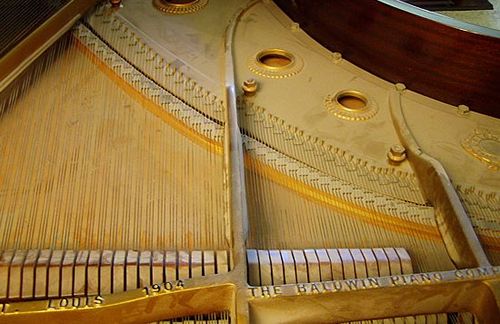
Here is our subject – a Baldwin grand which has not been cleaned for… well, a long time. Notice dust on dampers and plate, as well as soundboard.
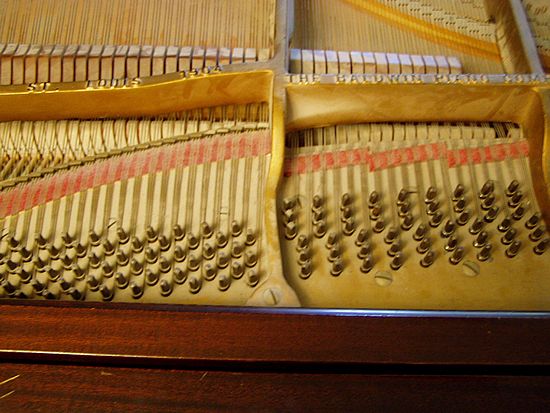
The tuning pin area. Dust gets between pins, under strings and on the colored felt padding.
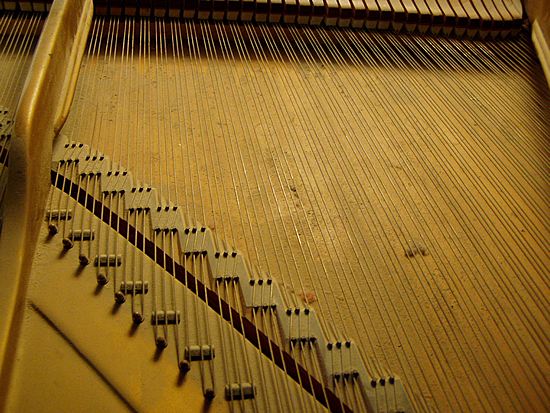
Another view of the soundboard
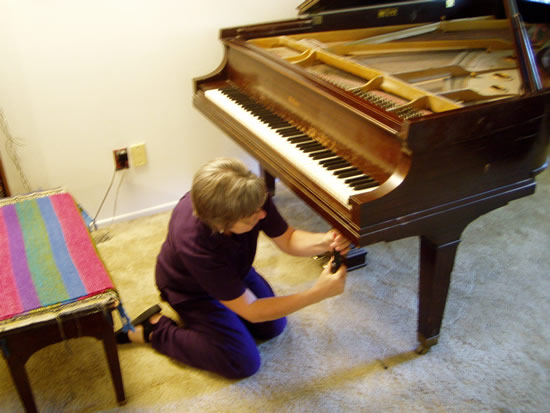
The action of a grand piano can be removed, but certain cabinet parts have to be unscrewed and removed first.
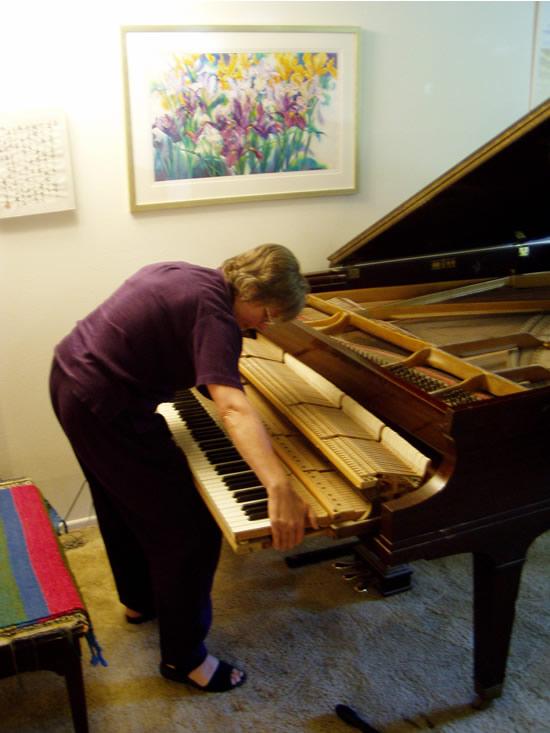
Removing the action allows us to vacuum off the action parts, but more importantly, it gives us access to the upper treble end of of the soundboard from inside the action cavity. We can also vacuum dust and debris from the keybed (inside of the piano).
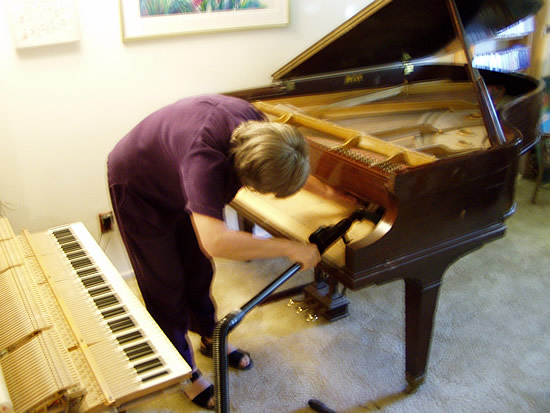
Vacuuming out the keybed. Often we find many interesting objects which have fallen into the piano over the years. We bring a strong portable vac with us, but if the piano owner has a good powerful vacuum on hand, we may use that.
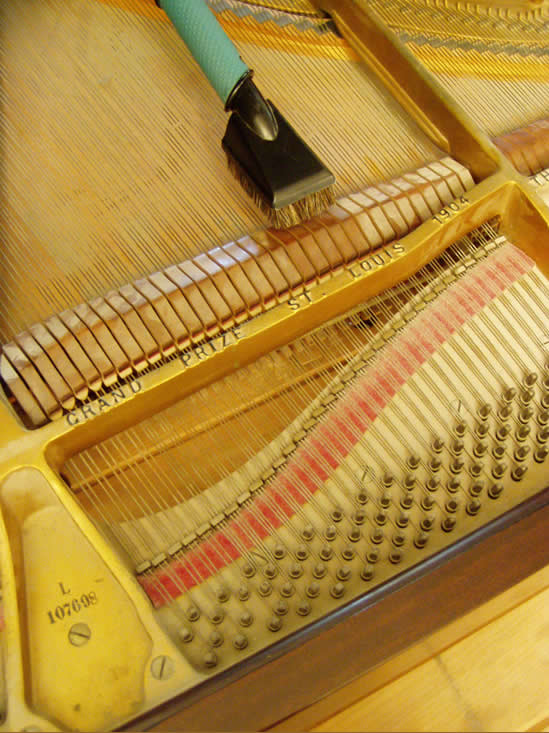
Cleaning the dampers. The difference is pretty obvious! If you choose to do this step yourself, whether with a rag or vacuum, please read the warnings above!
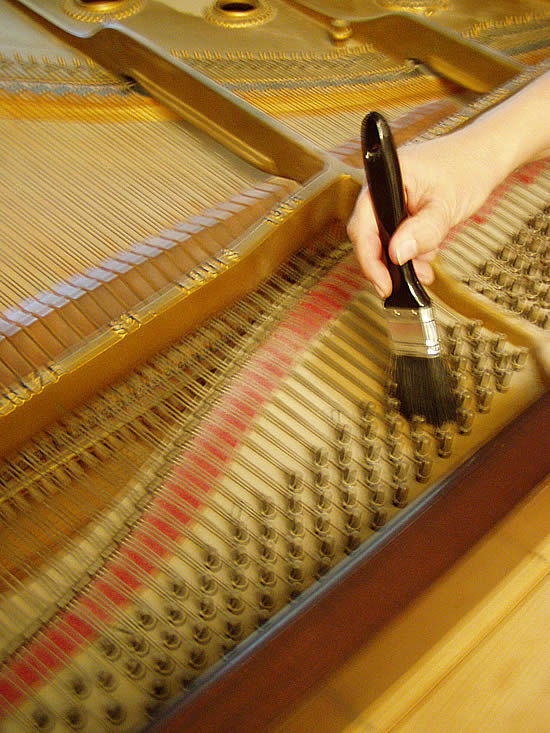
A clean paint brush can loosen the dust and debris between the pins, under the strings in this part of the plate, and on the stringing felt. By holding the vacuum attachment near where the brush is, the dust is vacuumed up as it is loosened. (The photo is not too clear, but I think you can make out the area that has been cleaned with the brush.) We bring several types of brushes, but this one is the most useful. The brush, and/or a soft cloth, can be used to clean off the plate, too. If you want to try this yourself, please read the warnings above first!
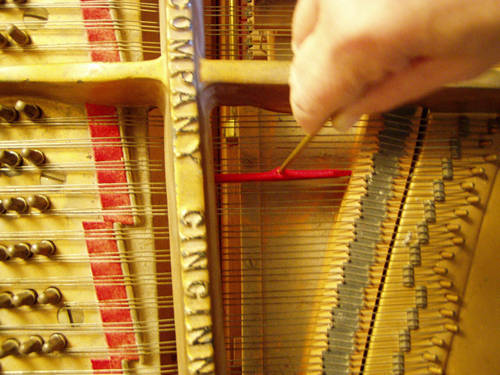
The specially made pads fit between the strings in order to push the dust around on the soundboard. This is the smallest pad on the shortest handle, used in the highest treble area. Because the action is out, any dust or debris that falls into that area can be easily vacuumed up.
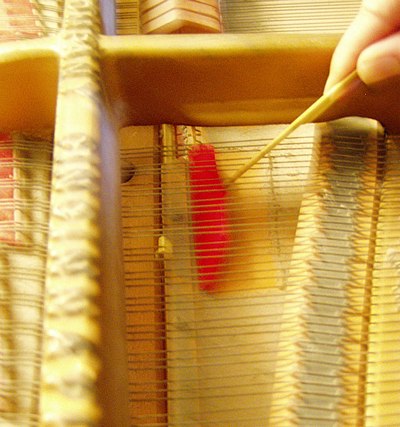
Here’s the pad in the upper treble after it’s been maneuvered through the strings. You can see the little pile of dust where the pad has pushed it.
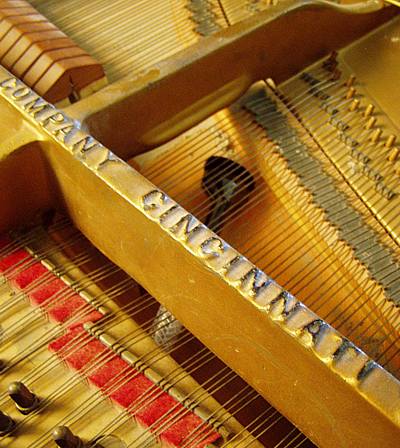
After the dust has been pushed into piles, tiny vacuum attachments on a small flexible hose can reach in and vacuum it up.
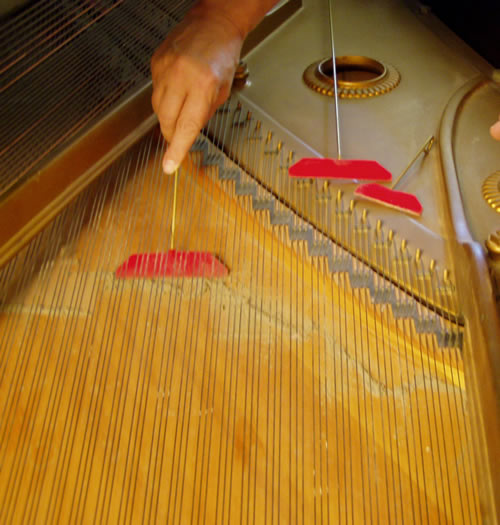
Here is the medium sized pad on a longer handle being used in the mid-range of the piano.
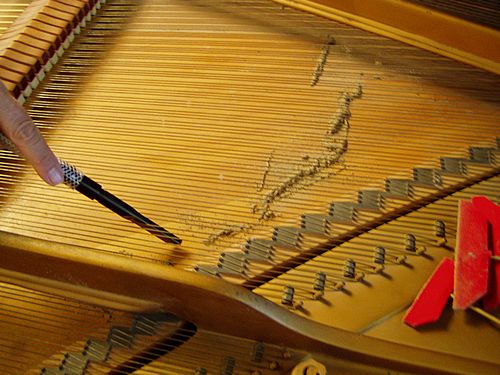
Here’s another tiny vacuum attachment which can fit between many of the mid-range strings.
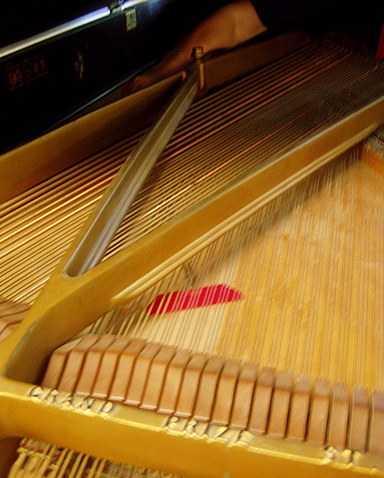
Here’s the largest pad on the longest handle, reaching under both the bass and treble strings from the lid hinge side of the piano. Access is limited depending on how the piano is located with respect to walls and how long the piano is, but one way or another, the entire soundboard should be accessible. The soundboard area on the right has had a “first round” cleaning. The pad is in the midst of dust.
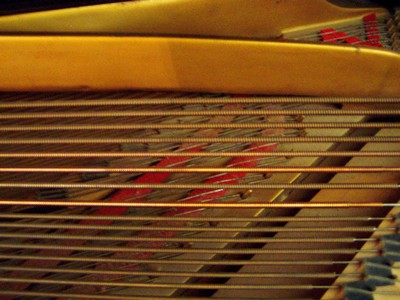
Using a clean paintbrush, the dust can be brushed off of the bridges and the felt under the strings, and vacuumed up. Notice the difference between the wood and felt that has been cleaned and those areas which haven’t.
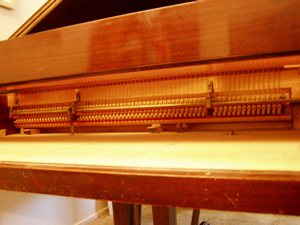
Here’s the inside of the piano with the action still out, after it has had its final vacuuming. (For those of you who are curious, those are the damper underlevers and damper wires you can see at the back.)
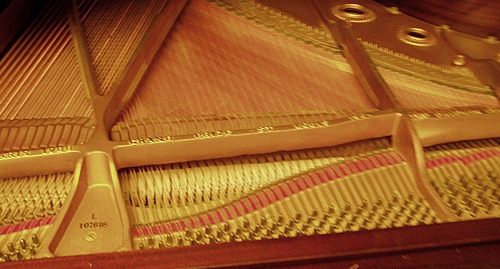
Sorry for the imperfect quality of this photo! It is supposed to demonstrate how nice the piano looks “after”. Below is the “before” view again.
